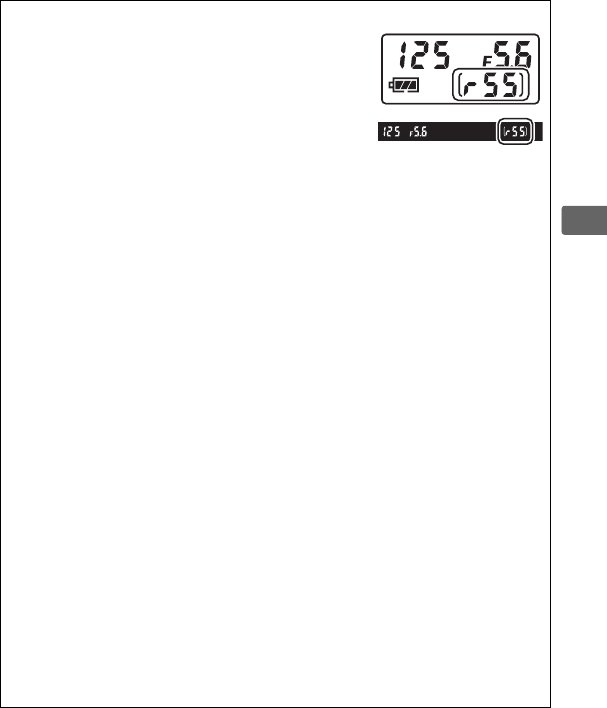
47
k
Frame rate drops at slow shutter speeds or very small apertures
(high f-numbers), when vibration reduction (available with VR
lenses) or auto ISO sensitivity control is on (0 70, 72), or when the
battery is low.
A The Memory Buffer
The camera is equipped with a memory buffer
for temporary storage, allowing shooting to
continue while photographs are being saved to
the memory card.
Up to 100 photographs can
be taken in succession; note, however, that the
frame rate will drop when the buffer is full (tAA).
The approximate number of images that can be stored in the buffer at
current settings is shown in the exposure-count displays in the
viewfinder and control panel while the shutter-release button is
pressed.
The illustration at right shows the display when space remains
in the buffer for about 55 pictures.
While photographs are being recorded to the memory card, the
memory card access lamp will light.
Depending on shooting conditions
and memory card performance, recording may take from a few seconds
to a few minutes.
Do not remove the memory card or remove or
disconnect the power source until the access lamp has gone out.
If the
camera is switched off while data remain in the buffer, the power will
not turn off until all images in the buffer have been recorded.
If the
battery is exhausted while images remain in the buffer, the shutter
release will be disabled and the images transferred to the memory card.
A Live View
If a continuous release mode is used during live view photography
(0 172) , photographs will be displayed in place of the view through the
lens while the shutter-release button is pressed.
A See Also
For information on choosing the maximum number of photographs
that can be taken in a single burst, see Custom Setting d6 (Max.
continuous release, 0 254).
For information on the number of
pictures that can be taken in a single burst, see page 364.


















